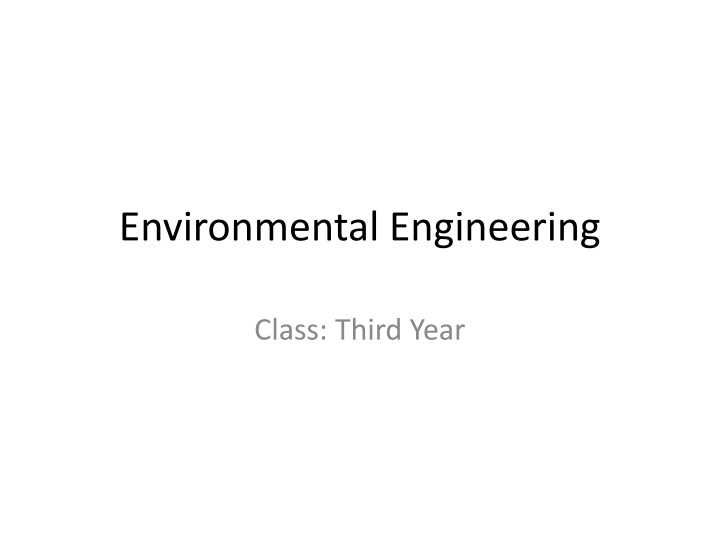
Cooling Energy Calculation for Environmental Engineering Class
Calculate the energy required for cooling a building in an environmental engineering class using specific parameters and features of an all-air cooling system. Utilize provided data and formulas to determine the cooling energy needed for the building based on various factors such as heat loss, heat gain, temperature differentials, and system efficiency.
Download Presentation

Please find below an Image/Link to download the presentation.
The content on the website is provided AS IS for your information and personal use only. It may not be sold, licensed, or shared on other websites without obtaining consent from the author. If you encounter any issues during the download, it is possible that the publisher has removed the file from their server.
You are allowed to download the files provided on this website for personal or commercial use, subject to the condition that they are used lawfully. All files are the property of their respective owners.
The content on the website is provided AS IS for your information and personal use only. It may not be sold, licensed, or shared on other websites without obtaining consent from the author.
E N D
Presentation Transcript
Environmental Engineering Class: Third Year
Homework Cooling applications Q.1 A building with 2.3 kW/K overall heat loss coefficient, 250000 kJ/K fabric thermal capacity, 125 kW monthly average heat gain, and 0.0091 kg/kg monthly mean outside moisture content. The building is occupied for 10 hours/day for (31 days), with the indoor air set point being 23 C, and the monthly average outdoor day and night temperatures are 33 C and 17 C respectively and mean monthly outside temperature is 25 C. Calculate the energy required for cooling this building using an all-air cooling system with the following features: 20 m3/s air volume flow rate, 70% fan efficiency, 1500 Pa pressure difference, 0.0084 kg/kg supply moisture, and 2.5 COP. (Take k-moisture = 1700 for moisture and k = 0.71 for degree day calculations, air density = 1.2 kg/m3 and specific heat Cp = 1.02 kJ/kg).








